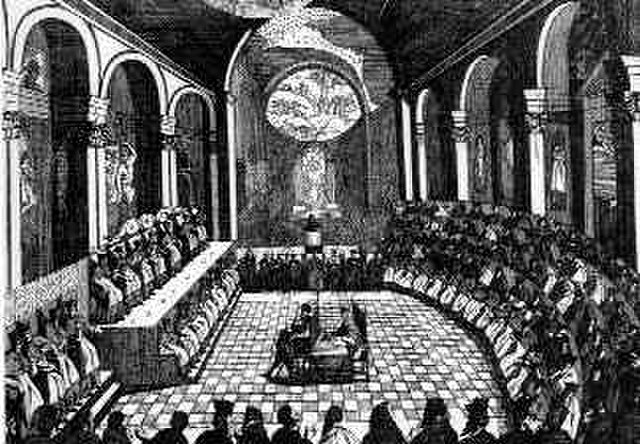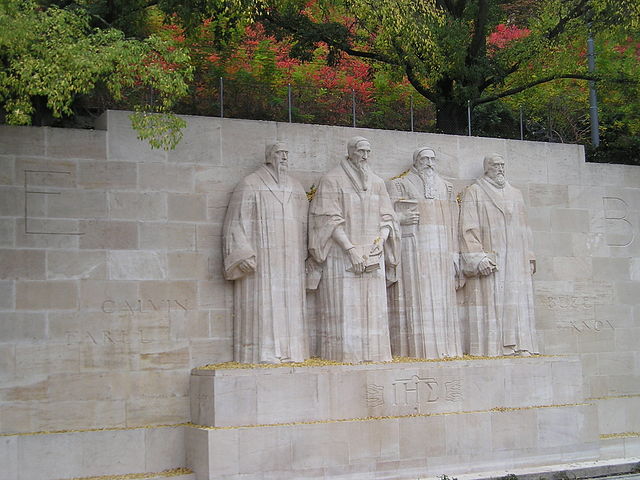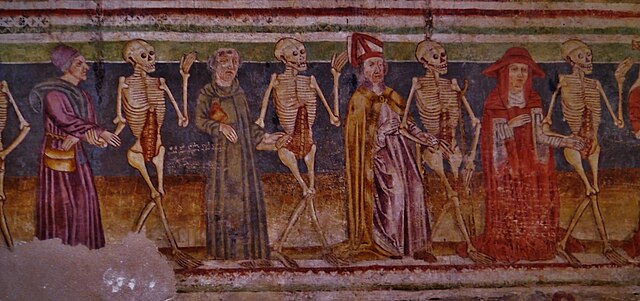The Counter-Reformation, also sometimes called the Catholic Revival, was the period of Catholic resurgence that was initiated in response to, and as an alternative to, the Protestant Reformations at the time. It began with the Council of Trent (1545–1563) and largely ended with the conclusion of the European wars of religion in 1648. The similar term Catholic Reformation may also encompass reforms and movements within the Church in the periods immediately before Protestantism or Trent.
Counter-Reformation
Counter-Reformation
Confutatio Augustana (left) and Confessio Augustana (right) being presented to Charles V
A session of the Council of Trent, from an engraving
The Reformation, also known as the Protestant Reformation and the European Reformation, was a major theological movement in Western Christianity in 16th-century Europe that posed a religious and political challenge to the papacy and the authority of the Catholic Church. Following the start of the Renaissance, the Reformation marked the beginning of Protestantism.
The International Monument to the Reformation, a statue erected in Geneva in 1909 depicting William Farel, John Calvin, Theodore Beza, and John Knox, four leaders of the Reformed tradition of Protestantism
Detail of the danse macabre (1490) by John of Kastav in the Holy Trinity Church, Hrastovlje, Slovenia
Funeral Mass with priest, choristers, bearers or mourners, and begger receiving alms (c. 1460–80)
Meeting of cardinals, bishops and theologians with Antipope John XXIII (r. 1410–1415) at the Council of Constance (from the Chronicle of the Council of Constance by Ulrich of Richenthal)








